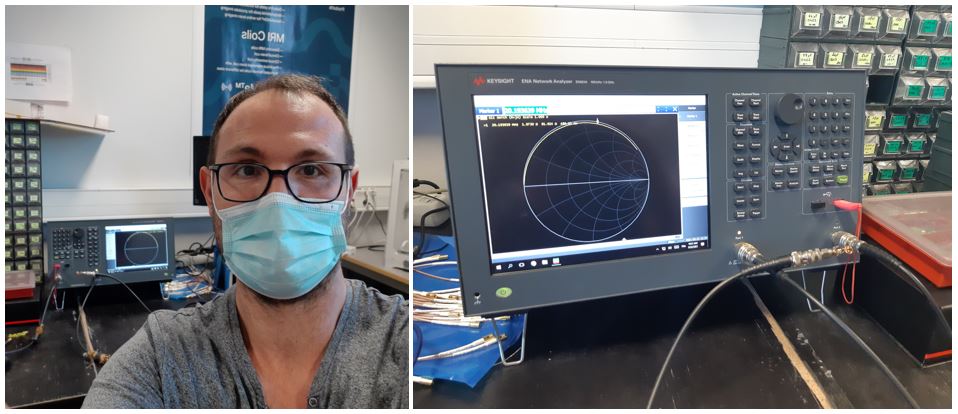BLOC is a European Project that brings together different academic and industrial partners to improve a new technology that integrates tissue engineering and magnetic resonance spectroscopy using dynamic nuclear polarization (DNP-MR), to monitor diabetes and liver diseases.
Dr. Marc Dubois is an engineer and leading expert on electromagnetic metamaterials for MRI. He has a strong scientific background, and he brought to BLOC project all the knowhow he gained during several years of work in top research institutes in different countries. Since October 2020 he is working at Multiwave Imaging SAS where he leads several research lines focusing on Dynamic Nuclear Polarization and Nuclear Magnetic Resonance.

Can you describe yourself in a couple of lines?
My name is Marc Dubois and I am the CEO of Multiwave Imaging SAS, a start-up company based in France developing metamaterial devices for MRI applications. I was trained as an engineer from the Ecole Centrale Marseille in France and started working on metamaterials for the control of elastic wave propagation during my PhD in Institute Langevin in Paris. Later I joined Pr. Zhang’s Lab during two years in Berkeley (USA) to develop acoustic metamaterials with zero index of refraction and PT symmetry. I returned to France as a post-doctorate researcher in 2017 to apply metamaterials concept to MRI application at Institute Fresnel within the EU funded FET Open project called M-CUBE. I joined Multiwave Imaging SAS in October 2020 to reinforce the scientific collaboration with our academic partners at the CRMBM and Institute Fresnel, both located in Marseille.
What is your role/position within BLOC?
Within the BLOC project, I am working on the design and fabrication of the chip that will be used for the Dynamic Nuclear Polarization and Nuclear Magnetic Resonance experiments. I am leading the scientific efforts from Multiwave Imaging and contributing to the design of the radiofrequency probe that will be used to excite the sample and acquire MR signals. These steps are essential to characterize the metabolic activity of the cells under test with high accuracy and perform predictive in vitro testing.
Could you tell us a little bit about the concrete work you are involved in inside BLOC project?
Metabolic activity is difficult to measure as it involves very small concentration of molecules or chemical compounds. NMR measurements with high signal to noise ratio (SNR) are required to successfully observe these signals over a relevant biological time scale. Our goal is to design a chip with a RF probe that allows DNP-NMR measurement techniques with the highest SNR possible.
What are the expected results?
The RF probe impacts several aspects of the NMR measurements. Not only the probe should present a strong efficiency (amplitude of magnetic field per unit of input power) but also a good homogeneity. The homogeneity of the magnetic field is crucial as it will be used to shim the main magnet and it will ensure that we collect as much as signal possible from the cell model. Finally, the probe and the electronics must be able to address NMR signals from different nuclei such as 1H and 13C to allow robust calibration and decoupling techniques.
What is the expected impact of the work you are doing?
As for everyone else involved in the project, our work which mostly focus on the hardware development is key to the ultimate goal of the project. We want to bring together OOC techniques and NMR measurement that are two advanced engineering field. The objectives are to obtain a proof of concept of real-time metabolic monitoring with DNP-NMR measurements. Further developments will include improvement of the temporal resolution and move towards clinical applications.
How do you feel about being a part of this European Project?
It is a great opportunity to participate to such ground-breaking projects. The level of interdisciplinarity among BLOC project partners is really impressive. This clearly boosts our motivation as we know that the hardware technology developed will be directly applied and used by our biochemists and biologists partners. Sharing ideas with such a broad panel of expertise also encourages positive critical and out of the box thinking that are required to succeed.
The other members of the BLOC Consortium are: IBEC, Oxford Instruments and IDIBAPS.
If you want to know more about the project check the BLOC webpage.